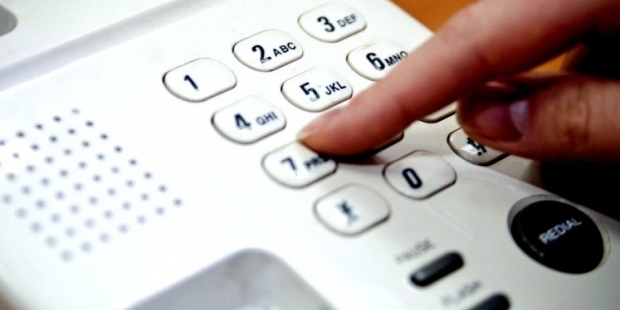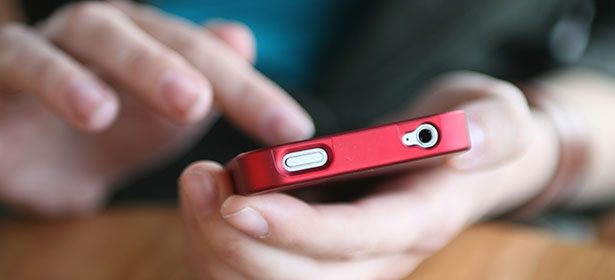- +877 776 0673
- [email protected]
- Mon - Fri: 9:00 - 18:00 EST

For those who need to quickly call forward, jump to:
The world has certainly changed with the advent of mobile devices. Now more than ever, we are connected to work, friends, and family wherever we are. Whether you work at home, the office, coffee shop, or from vacation, it is impossible to disconnect.
Thankfully, whether you want to work from home, the office, or the coffee shop, you can have all your calls forwarded to wherever you are, more often then not, it is to your mobile phone. A common question we get is, “how do I call forward my landline to my mobile phone?”
Call forwarding is NOT new. I’ll say it again, it is NOT new, but it is such a useful feature, I wonder why people do not use it more often.
But just in case, I will go over what call forwarding is and the types that exist.
Call forwarding is a standard feature on every telephone service that redirects an incoming phone call to another destination. The destination can be anything that has a telephone number associated like a regular telephone landline, a mobile phone, a fax machine, a voice mailbox, a personal assistant, or perhaps, an answering service. Whatever the case, you can get creative.
The most common use is call forwarding your office or home landline to your mobile phone, or vice versa. If you travel quite a bit, more likely than not, you will want to take your calls at all times. As soon as you step away from your desk/office, you will want your phone calls answered on your mobile phone.
This type of call forward allows you to turn on and off call forwarding using a special activation and deactivation code. Unfortunately, phone companies can’t seem to agree on a common code system so it is important to check with your phone company on what the code are for your phone service.
A common example of a code to activate is *72 and then the 10-digit number you want to forward to. You’ll either hear a confirmation tone indicating call forwarding is set or ringing. If you hear ringing, make sure to wait until the line is answered either by a person or a voice mail greeting. *73 is the common deactivation code to turn call forwarding off.
Advantage
Sends all call to the destination number on the first ring. So, if you receive 10 calls at once, they will all forward to the destination of choice.
Disadvantage
The only disadvantage is that you will have to remember to turn of and off call forwarding.
This one is pretty much exactly as the name indicates. If “call forwarding no answer” is set on the phone line, it will automatically forward to the destination number after a configurable number of rings (default is 3 rings).
I love this option because it gives you the option to pick up the call but if you get busy, or unavailable, you can have the calls routed to someone who is always available, for example, your customer service representative.
Advantage
This call forwarding is on by default 24/7 so you do not need to remember to activate or worry about missing any important calls.
Disadvantage
If you set the call forwarding after a high number of rings, the caller experience will be less than desirable. For example, if you have the call forwarding no answer set to 4 rings and the call then routes your customer service department, which in turn, takes about 2 rings, the person dialing will get a minimum of 6 rings, which may be too long for some businesses.
If all of your lines are in use, or you are are a call, this option is perfect. Rather than hearing a busy signal, the caller will automatically forward calls on a busy signal. The caller will be redirected to the destination telephone number on first ring and will never hear the busy signal.
Advantage
No more busy signals. More business for you, life is good!
Disadvantage
Unless there is a reason where you do not want to answer all of your phone calls, there’s really no drawback to using busy call forwarding.
Now, onto the codes and instructions.

If you are looking to call forward an regular landline (a.k.a. a POTS line… plain old telephone system) from your home or office. Carriers like Comcast, AT&T, Bell Canada, Telus, Rogers, and similar.

This method involves punching in a code on your phone’s dial pad. The codes listed are accurate as of July 2016. For details on additional codes including call forward when busy or no answer call forwarding, please see the detailed instructions links I’ve listed under each carrier.
T-mobile
Enable – Dial **21*PhoneNumber#
Disable – ##21#
Verizon
Enable – Dial *72 followed by the phone number
Disable – *73
Sprint
Enable – Dial *72 followed by the phone number
Disable – *720
AT&T
Enable – Dial **21*, followed by the 10-digit number you wish to forward the calls to, then dial#. For example, **21*1235556789# forwards your call to 123.555.6789.
Disable – Dial #21#.
FIDO
Enable – *21*[10 digits]#
Disable – ##21#
ROGERS
Enable – Dial *21*(phone number)#, from your home phone. The phone number being the number you wish to forward the calls to. Once you hear a confirmation tone, hang up the phone.
NOTE!
If you don’t see what you are looking for, please let me know, leave a comment, Tweet, or email, and I will be more than happy to help you!
Main image credit: YU-JEN SHIH
Want to learn more? Read these related articles:
Please click Like if you found value in this article. Click Share to spread the love, thank you!